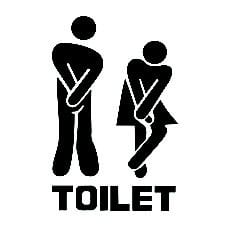分享:
这篇文章对您有帮助吗?
Having strong pelvic floor muscles gives us control over the bladder and bowel. If our pelvic floor muscles are weak, that means the internal organs are not fully supported and you may have difficulty controlling the release of urine, faeces (poo) or flatus (wind).
Common causes of a weak pelvic floor include childbirth, obesity and straining of bowel during chronic constipation. Pelvic floor exercises are designed to improve muscle tone and prevent the need for corrective surgery.
Pelvic floor muscles are layers of muscles that support our pelvic organs and protect the bottom of pelvis. The pelvic organs are the bladder and bowel in men, and bladder, bowel and uterus in women.
The pelvic floor muscle layer has hole for passages to pass through. There are two passages in men (the urethra and anus) and three passages in women (the urethra, vagina and anus). There is also an extra circular muscle around the anus (the anal sphincter) and around the urethra (the urethral sphincter). Although the pelvic floor is hidden from view, it can be consciously controlled and therefore trained, much like our arm, leg or abdominal muscles.
Pelvic floor muscles provide support to the organs that lie on it. The sphincters can control the release of urine, faeces and flatus (wind) and allow us to delay emptying until it is convenient. When the pelvic floor muscles are contracted, the internal organs are lifted and the sphincters tighten the openings of the vagina, anus and urethra. Relaxing the pelvic floor allows passage of urine and faeces.

How can I strengthen these muscles?
Do this whole training plan (three sets of 8 to 12 squeezes) each day while lying down, sitting or standing. There are so many other therapeutic exercises which is equally important to help strengthen our pelvic floors. They are also known as the Low intensity core exercises.
分享:
这篇文章对您有帮助吗?
分享:
这篇文章对您有帮助吗?